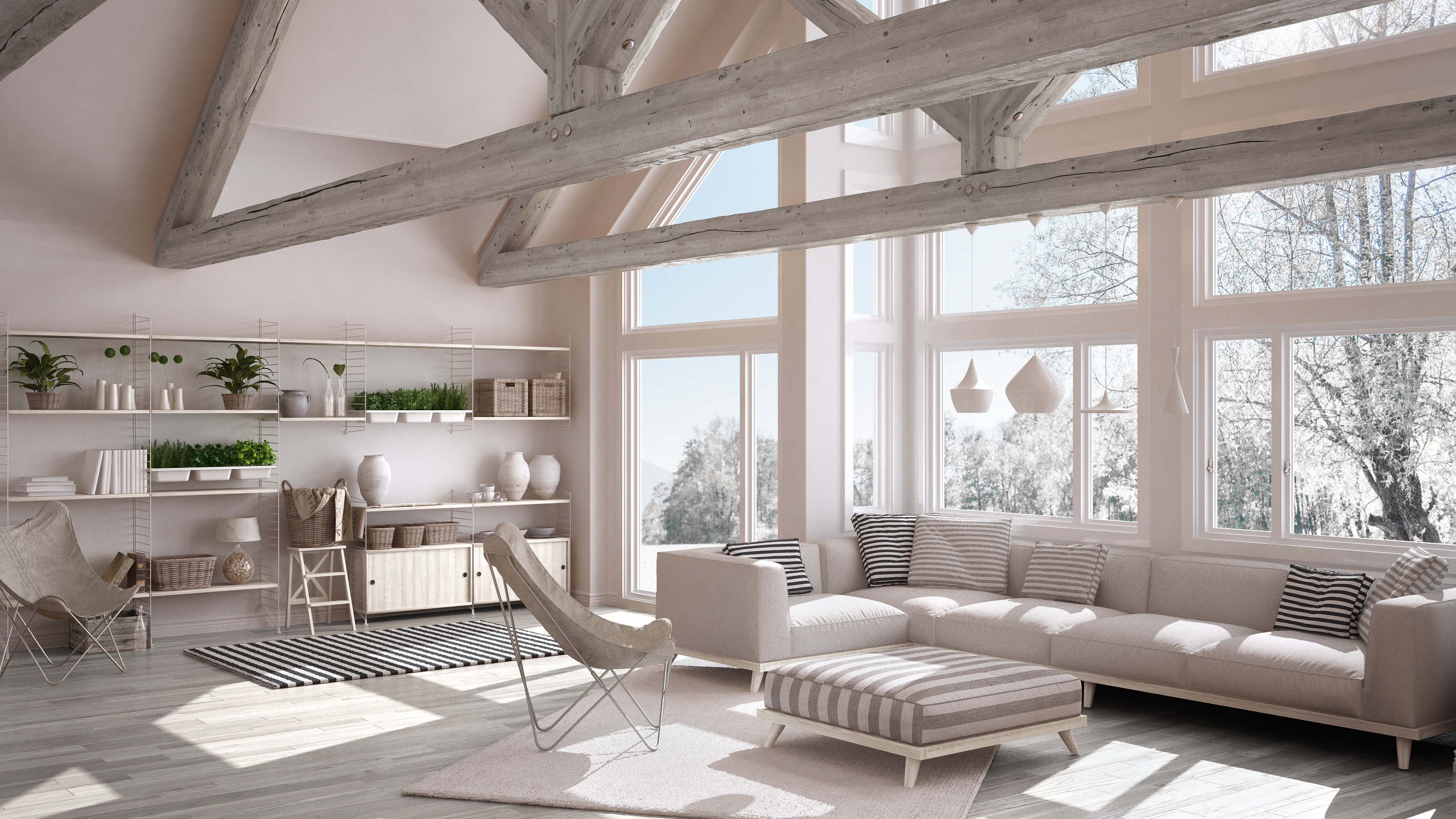How Can You Create an Energy Efficient Home?

As energy prices continue to rise, it’s more important than ever for homeowners to take charge of their energy bills with energy efficient home upgrades. By installing energy efficient windows and appliances, or investing in solar power and water-saving technology, homeowners can slash energy bills and create a more eco-friendly home.
Achieving complete home energy efficiency is a step-by-step process. It starts with an assessment of the current level of energy consumption in the home. Once the homeowner understands which home energy solutions could improve efficiency performance, they can create and implement a home energy improvement program.
Which Home Energy Solutions Should Homeowners Consider?
The U.S. Department of Energy (DOE) says that property owners should look at several different areas if they want to create an energy efficient house. Variables such as the home’s current condition and age, the local climate, and the behavior and habits of the occupants can affect home energy efficiency.
The level of residential energy efficiency can also depend on the condition of different systems within the home, including major appliances, lighting, windows, insulation and air sealing, climate controls, and water heating and usage. Energy efficient home plans for existing houses should address issues in these areas, if necessary. Other home energy solutions such as passive solar heating, cool roofing, and renewable energy systems can also help improve residential energy efficiency. Thanks to special financing programs, even major home energy improvement programs can be financially realistic for homeowners.
Different Systems Work Together
It’s important to understand all the variables involved in energy efficient houses because some systems can affect others either positively or negatively. For example, a home could have a new HVAC system, but could still be inefficient because it lacks effective air sealing and proper insulation. With proper insulation, however, a new HVAC unit would provide the highest level of energy savings.
Do You Need to Update Your Appliances?
A home energy improvement program could include efficient appliances. To decide if there’s a need, the homeowner can estimate current energy costs of major appliances such as a dishwasher, refrigerator, washing machine and space heater. The DOE has a calculator for estimating energy usage. Alternatively, homeowners could purchase an electricity usage monitor from a hardware store.
Newer appliances, especially those that are Energy Star certified, will have energy consumption data on display at appliance showrooms so that the homeowner can easily decide if the appliance fits in their home energy efficiency plan before they purchase it.
Air Sealing and HVAC
High-efficiency HVAC systems can save 20 percent or more on heating and cooling costs. These savings can be greater if the unit is more than 10-20 years old..
However, merely updating your HVAC equipment and not taking any other steps does not constitute a complete energy efficient home plan. Insulation and air sealing go hand and hand with HVAC performance. The effectiveness of insulation will vary depending on the climate. A home energy audit can help the homeowner create an energy efficient home plan. Air sealing around doors, windows, plumbing and electrical outlets can enhance the energy-saving effect of new insulation and new appliances.
Lighting
Efficient lighting can reduce the consumption of electricity, while skylights or strategically-placed windows can increase natural light and solar gain during the daytime. LED lights generally have a higher price tag, but they can save money in the long run because they consume 80% less energy than incandescent bulbs and last 25 times longer. Compact fluorescents, meanwhile, last 10 times longer than incandescents.
Water Heating and Saving
Water heating can account for 18 percent of a home’s energy usage. Aerators or low flow plumbing fixtures can decrease not only water usage, but also hot water usage. For homes with a lower hot water demand, a tankless heater could be the best option. A more efficient storage tank could provide benefits as well, this helps limit standby loss, which occurs when the water is reheated again and again.
Larger Improvements
Thanks to financing sources such as property assessed clean energy (PACE) programs, major improvements such as the addition of solar panels, geothermal heating systems or wind power are financially feasible for homeowners who want to include renewable energy in their home energy improvement program.
Geothermal heat pumps use 25-50 percent less electricity than standard HVAC systems, while solar panels can significantly cut into the $1,430 worth of electricity that the average home uses each year.
You Can Afford Major Home Energy Efficiency Improvements
With PACE financing, a major home energy efficiency improvement can be repaid over time with the homeowner’s property taxes. These programs can also cover efficiency upgrades such as new HVAC systems, insulation installation, and new Energy Star certified windows. With PACE financing, homeowners can afford to undertake a complete energy efficient home plan.
PACE can help you make your home more energy efficient so you can live sustainably while reducing your energy consumption. For more information, call Ygrene at (855) 901-3999 or check your eligibility online.




